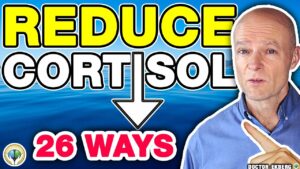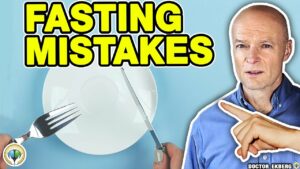In this video, the speaker summarizes key ideas from the book „The 4-Hour Work Week“ by Tim Ferris. The book introduces the concept of the „new rich,“ who value freedom and prioritize experiences over traditional retirement. The speaker discusses eight rules for joining the new rich, such as balancing work and rest, focusing on strengths, and emphasizing relative income. The speaker also explains the DEAL acronym, which represents the four-part method mentioned in the book: Define fears and goals, Eliminate time-wasters, Automate processes, and Liberate oneself from traditional work structures. The video concludes with a recommendation to read the book.

Our Summaries are written by our own AI Infrastructure, to save you time on your Health Journey!
Key Insights
- The book „The 4-Hour Work Week“ presents a new approach to life called the „new rich,“ which emphasizes freedom of time and location.
- Key rules for joining the „new rich“ include alternating periods of work and rest, leveraging time to achieve accelerated results, and focusing on strengths rather than weaknesses.
- The timing is never right to pursue your dreams, so it’s important to take action and adjust along the way.
- Seeking forgiveness rather than permission empowers individuals to break free from societal norms and pursue their own path.
- Relative income, considering both money and time, is more important than absolute income in achieving a fulfilling lifestyle.
- Eustress, a positive and growth-oriented stress, should be embraced, while distress, a harmful and weakening stress, should be avoided.
- The DEAL acronym (Define, Eliminate, Automate, and Liberate) outlines a four-part method for achieving the „new rich“ lifestyle.
- Defining fears and goals is crucial for making progress, and taking the first action towards your goals immediately is essential.
- Eliminating time-wasting activities and applying principles like Parkinson’s law, the Pareto principle, and batching can greatly increase productivity.
- Automation involves building systems that allow others or technology to handle tasks, freeing up your time for higher-value activities.
- The final stage is liberation, where you can enjoy the fruits of your labor, have the option to work or not, and focus on tasks that truly matter to you.
Transcript
In this video, the speaker summarizes the key ideas from the book „The 4-Hour Work Week“ by Tim Ferriss, which he claims has changed his life. The book challenges the traditional notion of retirement and introduces the concept of the „new rich,“ who prioritize freedom, time, and location over material wealth.
The first key idea is the difference between the „deferrers“ and the „new rich.“ The deferrers follow the old-school mentality of sacrificing their lives for a retirement that comes after years of hard work. On the contrary, the new rich adopt a new way of thinking, aiming to live a retired lifestyle throughout their lives. They strive to free up their time and location, valuing experiences and personal fulfillment over traditional work.
The speaker mentions that the concept of the new rich was revolutionary at the time of the book’s publication in 2006. However, it has now become more mainstream, with the rise of digital nomads and the passion economy. The pandemic has also accelerated remote work, making it more accessible for people to pursue this lifestyle.
The speaker proceeds to summarize the eight simple rules put forth by Tim Ferriss to become part of the new rich:
1. Interest and energy are cyclical, emphasizing the importance of alternating between work and rest periods throughout life.
2. Less is not laziness; it’s about leveraging time to achieve accelerated results.
3. The timing is never right, and waiting for the perfect moment will only hinder progress.
4. Seek forgiveness rather than permission, encouraging taking risks and not being held back by societal norms.
5. Emphasize strengths and don’t solely focus on fixing weaknesses.
6. The goal is not solely money; it’s about creating a rich lifestyle.
7. Relative income is more important than absolute income, considering time and money as resources.
8. Distress is harmful, while eustress (healthy stress) promotes growth.
The speaker then moves on to the four-part method outlined in the book, represented by the acronym DEAL:
1. D stands for define, emphasizing the need to define fears and ambitious goals. Mitigating fear and embracing uncertainty are essential components to achieve the desired lifestyle.
2. E stands for eliminate, encouraging the elimination of time-consuming tasks with little value. Concepts like Parkinson’s law, Pareto principle, and batching help to optimize productivity.
3. A stands for automate, focusing on building systems and outsourcing tasks through virtual assistants to free up time. The concept of finding a muse, a lifestyle business, is introduced as a means of generating passive income.
4. L stands for liberate, which involves freeing oneself from the constraints of a traditional 9-5 job and working on one’s own terms.
The speaker concludes by recommending the book and suggests using Shortform, a service that provides detailed book summaries, as a supplement to reading the book itself. He also mentions two other life-changing books, „Show Your Work“ by Austin Kleon and „Anything You Want“ by Derek Sivers, which he summarizes in another video.





